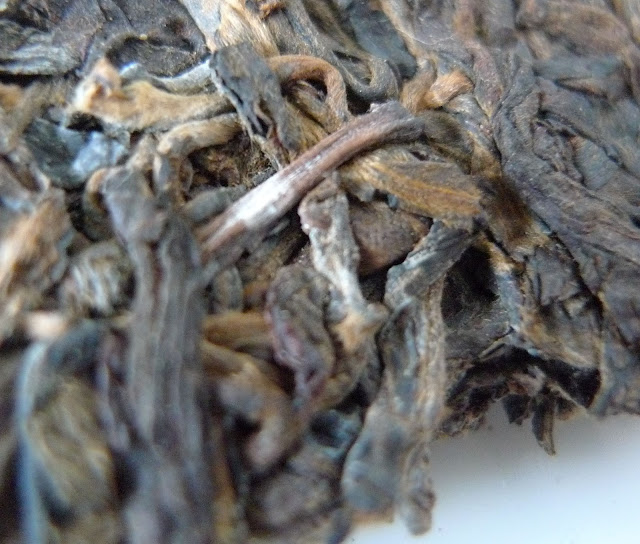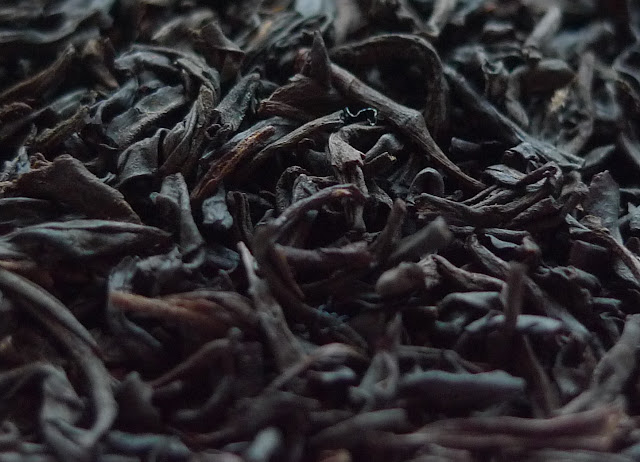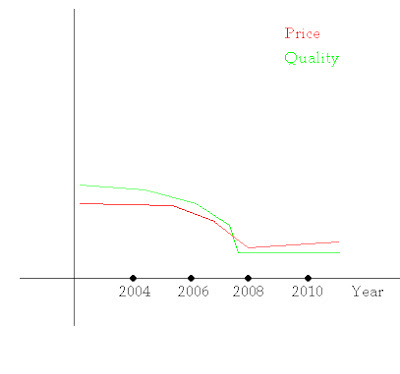The following commented-out text will probably make little sense to most people, so feel free to skip it. But as I know that numerous computer scientists read this blog, I just had to share the following application of theory:
/*
Having passed an exam from Complexity recently, I realized that Borodin's gap theorem (a part of the assignment) is actually a very useful tool for tea merchants. When translating my notes about the Xizihao 2007 Longfeng, I felt the tea did, again, badly. But - let us have
- PRICE: a Blum price measure
- x: a reasonable price of tea
- g(x) a Xizihao pricing function (2^x maybe?).
Borodin's theorem says that then exists Houde pricing function T(x) so that PRICE(T(x))=PRICE(T(g(x)))
This may be interpreted that Houde Xizihao prices are as reasonable as Houde prices of reasonably priced teas. Thus, if Houde has reasonably priced teas, his Xizihao pricing is also sound. Therefore Houde is a nice store!
*/
2007 Xizihao: Dragon and Phoenix (Longfeng)
We'll start with the cheaper of the pair, though by no means a cheap cake (Jas-etea has it cheaper than Houde, by the way). It is a blend of Hekai, Bulang and Youle. I have never had a pure Hekai, so I can't comment on that, but elements of Bulang and Youle are certainly there.
Now, the dry leaves - they are not as "fancy" as the other stuff I had from Xizihao which gives me hope that this might be, at last, to my taste.
The compression is high and as a result, dry leaves do not have much aroma. Wet leaves do have a very good aroma on the other hand - something like red berries and a bit of animality, with a good amount of low sweetness.
The liquor itself does not smell too strong, but I do not perceive that as a negative - many good thick teas do not smell too much actually.
I was surprised by how thin the tea was in the 1st brew. It was very light, sort of empty, with a touch of overripe fruit and meadow flowers (Youle part, I think). In the 2nd brew, it became a bit better and thicker, luckily. At this time, the taste is allright, decently flowery and with a good mouthfeel. But I can not help but feel that the tea is too light in taste and richness (even though the liquor is reasonably dark). At the end of main taste of the 2nd brew, a more solid woodiness comes (Bulang-style wood). The third brew is similar to the 2nd - even though I push the tea hard, it does not fight back at all. A bit of pleasant honey appears, at least. The fourth brew is downright weird (on both tastings I had), being almost unpleasantly citric and sour. Nice honey blinks through the sourness, but is pushed back too much. The fifth brew and oncoming (few) ones are allright, nonoffensive drink.
The nice mouthfeel of 2nd brew gradually vanishes which is a pity. The tea has, perhaps not surprisingly, not much stamina.
I feel that I am deaf to the positive features of recent Xizihao (if any, of course) - don't tell me that there are none with the price. But people who drank it with me confirmed most of my observation. What is wrong then? Me? The storage? Only inferior Xizihaos being sold to the West? I do not know.
Further reading: Half-Dipper
2007 Xizihao Chawang
This is my first smoky-smelling Yiwu tea. When I opened the package, I thought a modern CNNP has infiltrated the bag.
I do not think it is a natural smokiness as it is almost not present in the aroma of wet leaves and in the taste.
The wet leaves smell gorgeous - the smokiness is only in the background; there is solid dry woodiness, dark forest fruit and intense sweetness. The smoke manifests itself in the "aftersmell" shortly after.
The tea is thick and "present" from the first brew on and has a very good mouthfeel (which lasts more than first three infusions). So far so good.
The issue is that first two brews have only a faint taste. It is an interesting taste - "mystical fruit", but too weak really. There is a tiny bit of smokiness in background, however if I have not smelled it in dry leaves, I might not notice it at all.
The third, fourth, fifth and the last, sixth brew have more taste, but it leaves me wondering if I did not prefer the tea tasting weakly. When the leaves open, I found two possibilities there: steep it shortly/use smaller amount of leaves and have a boring, but drinkable thing. The other possibility is to use normal amount of leave/normal steeping times and get a strangely tasting thing. I can not say the taste would be ulltimately bad - it is just really strange. There is more of the smoke and unpleasant bitterness.
The bitterness kills a bit of the good mouthfeel, so I resort to shorter steepings to enjoy the feeling, at least.
If I forget about the taste, this tea is really nice - feeling good, being thick and sweet. However, as I said in earlier Xizihao posts, there are teas with these features which have a good taste on top. And they have double the stamina.
Summary
This was the last of younger Xizihaos I have tasted in this batch (and possibly the last ever). I do not like expensive tea unless it is truly justified and, in this case, I feel it is everything but.
However, I found a good use for the rest of these samples (still, if you want to try them, just drop me a comment - as long as I do not have to do much getting them to you, I'll gladly do so) - little taste and generally good mouthfeel sound like a good additive. And indeed, I made some good house blends with them. I have some cheap teas which, when brewed right, taste very well, but some of them lack a bit of extra sweetness or better mouthfeel. Mixing them 1:1 with a well chosen sample from Xizihao, I get a very good taste with reasonable mouthfeel, thickness and all that. One would expect more than a "good additive" from teas costing that much, but in the end, I am glad they are not entirely wasted.





















































